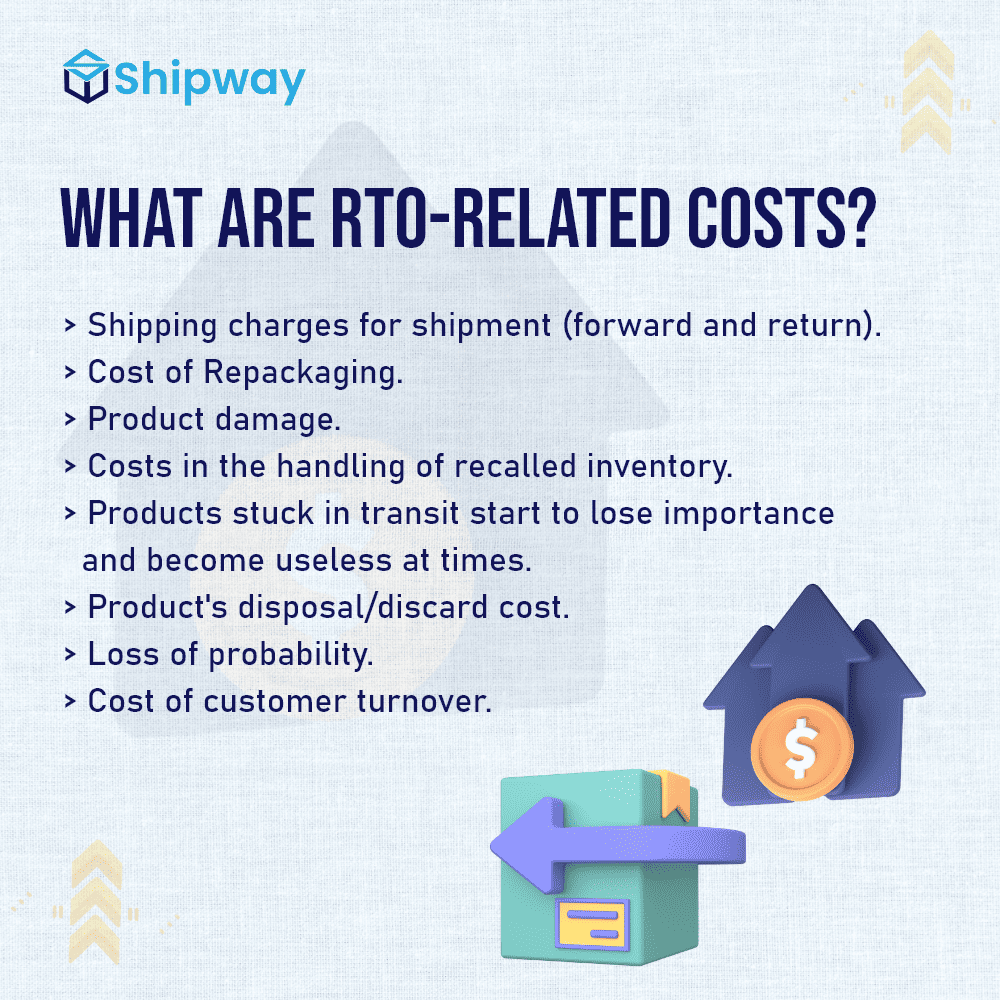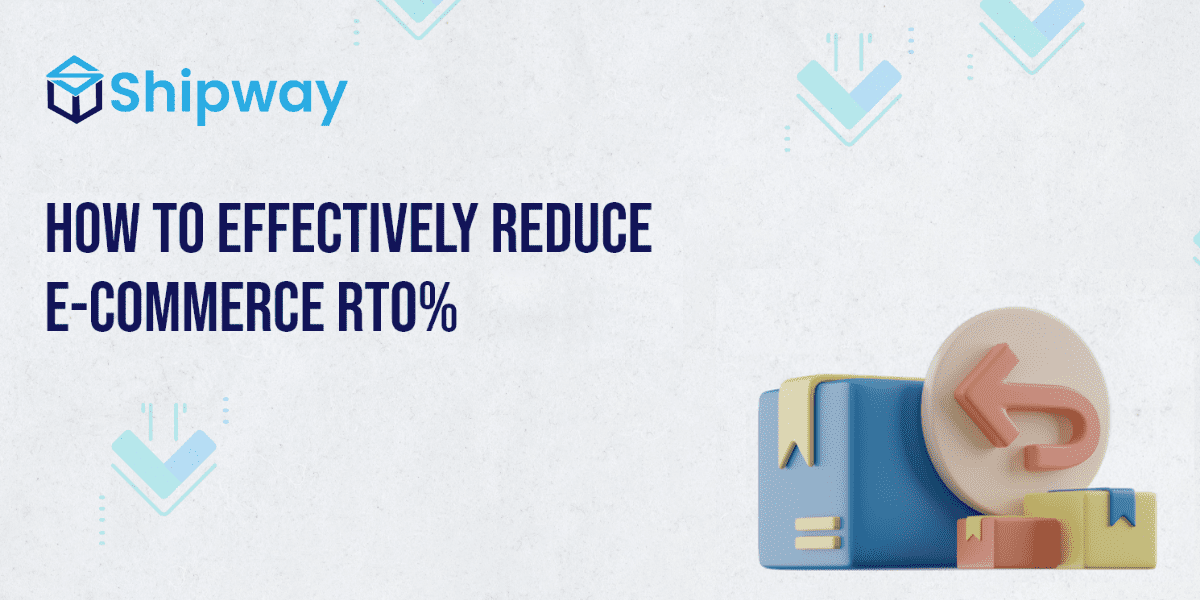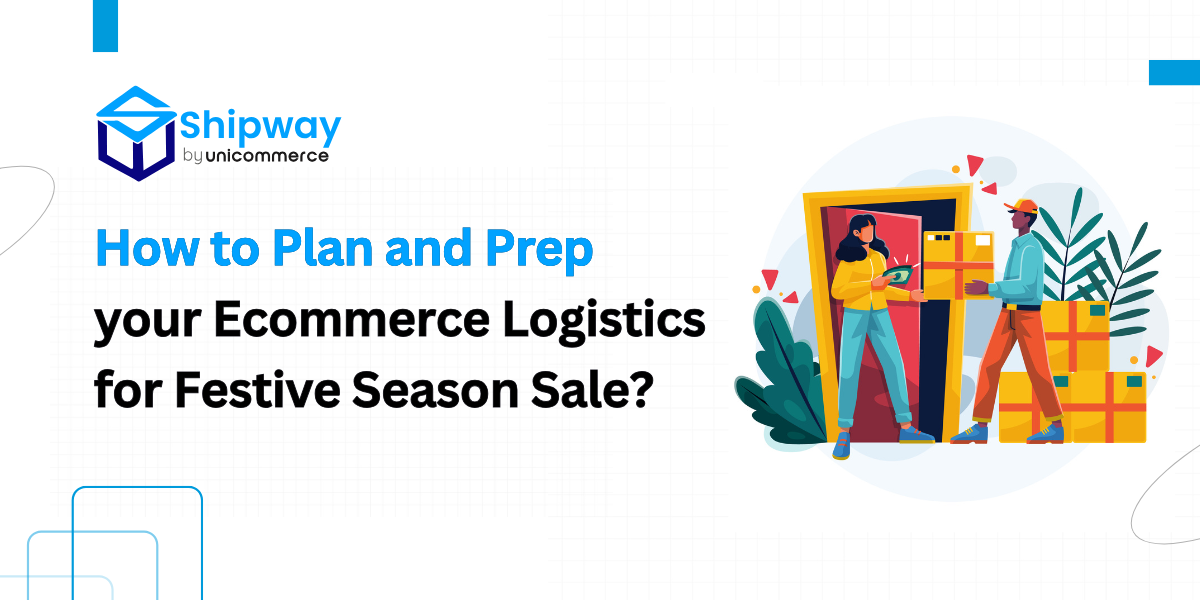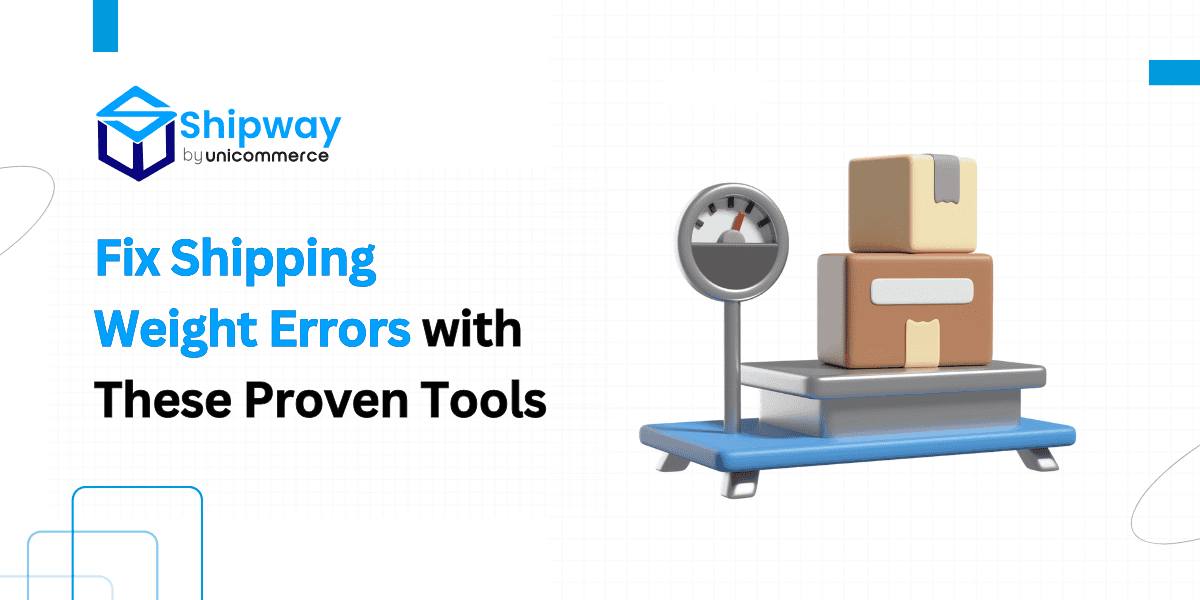E-commerce sellers know that RTO (Return to Origin) is a big headache. An RTO happens when an order doesn’t reach the customer and is sent back to you, the seller. This can happen for many reasons, like a wrong address, nobody home to receive the order, or the buyer simply does not want to accept it.
Each RTO means extra costs and wasted time. In fact, studies and industry reports suggest around 20–30% of orders in India end up as RTOs (especially cash-on-delivery orders), though it can be lower in other countries.
That means almost 1 in 4 orders might be returned! This makes reducing RTO in e-commerce really important to keep your profits up and customers happy. If you’re looking for how to reduce RTO in India, you’re not alone.
Why is RTO costly?
RTO in ecommerce becomes costly because the seller has to pay shipping twice (forward and reverse), and your product can get damaged or stuck during the shipping process. It also uses up your cash and inventory space while the item is in transit.
In simple terms, RTO stops your business from making money and can hurt your reputation if customers have a bad experience. Sellers on communities like Reddit call RTO the “nightmare of e-commerce.” If you don’t have a proper RTO reduction plan, your margins can sink fast.

Common Reasons Orders Become RTO
Knowing why orders return helps fix the problem. Some top causes for RTOs are:
- Wrong or incomplete address: If the pin code, house number, or landmark is missing or wrong, the courier can’t find the customer.
- Customer not available: The buyer might be away, or the delivery was attempted when no one was home.
- Cash-on-delivery (COD) refusal: Cash-on-delivery (COD) remains the most preferred payment mode in India, especially across Tier 2, 3, and 4 cities. But it’s also the single biggest contributor to Return-to-Origin (RTO) losses. Many COD customers change their minds last minute or simply refuse delivery, sometimes pretending no one’s home, because there’s no upfront payment involved. Unlike prepaid buyers who are invested in receiving their orders, COD buyers face no financial consequence for refusing them. This lack of commitment often translates to higher RTO rates. Understanding this buyer mindset is the first step toward designing a more effective RTO reduction strategy.
- Duplicate or test orders: Some people order the same item twice to keep one and return the other.
- Courier issues: If the courier service is slow or poorly managed, especially in remote areas, the customer might cancel, or the courier may mark it RTO.
- Shipper/Courier instructions: Sometimes you, as the seller, might tell the courier to RTO the shipment. For example, if the customer cancels last minute, or you realize you can’t fulfill the order. In tracking platforms, this shows up as “Shipper instructed to RTO” or “Return to Origin at shipper’s request.”
On tracking sites, you might see statuses like “RTO In Transit,” which means the package is being sent back, or “RTO Delivered,” which means the order has returned to your warehouse. These all contribute to a high return to origin rates, which is why businesses actively seek strategies to reduce RTO.
What Makes Customers Say “No” to COD Deliveries?
When a package arrives and a customer refuses payment-on-delivery (COD), it hurts your RTO (Return-to-Origin) rate and your bottom line. Here are some big reasons why customers turn away COD orders:
- Trust Issues or Bad Past Experience – If they’ve had a package lost, damaged, or just never show up before, they’re less likely to trust COD again. Building trust with clear tracking updates and good customer service can help improve their confidence.
- Delivery Delays, Especially During Special Occasions – Imagine ordering a birthday gift and it shows up days later. When delivery drags on, people start to cancel COD orders because the moment has passed. Fast, reliable shipping and accurate delivery windows can keep customers committed.
- Product Looks Different from Expected – When the item in the package isn’t what they saw online, like a color mismatch, poor quality, or missing parts, customers often refuse COD orders. High-quality images, honest descriptions, and customer reviews can set the right expectations.
- Too Easy to Cancel a Regretted Order – If canceling is as simple as clicking a button or refusing on the doorstep, many customers take that option when they have second thoughts. Adding a quick reminder or confirmation step before finalizing a COD purchase can reduce “oops, I didn’t mean to order” moments.
- No Financial Risk in Saying “No” – Because they haven’t paid upfront, refusing COD costs customers nothing. They know there’s no penalty for canceling at delivery. Offering small incentives, like a discount on their next purchase if they accept the delivery, can encourage follow-through.
Understanding how returns are different from RTO and the reasons for COD order refusal is key to building a smarter RTO reduction strategy. By improving trust, speeding up delivery, setting clear expectations, and adding gentle commitment steps, you can cut down on refusals and keep more orders moving forward.

How Does RTO Impact Your Ecommerce Business?
RTO not only wastes money, but it also hurts your customer trust and growth:
- Lost revenue and cash flow: You lose the sale and any money the customer paid, plus you have to pay for return shipping and repackaging.
- Inventory block: That returned item sits in your stock and can’t be sold again until inspected, slowing down new orders.
- Extra work and costs: Your staff must check returned items for damage, clean or repackage them, and update your system. All this uses time and money.
- Customer trust drops: If orders keep failing, customers may avoid ordering from you in the future.
Because RTO rates in India are often around 20–25% on average (and can spike to 30–40% in some areas or product categories), it’s like losing a quarter of your business unless you fix it. That’s why smart sellers are investing in RTO reduction tools from Shipway to find patterns, incorrect addresses, and flag risky orders or fix them quickly.
Top Strategies to Reduce RTOs in Ecommerce
1. Pre-Purchase Strategies to Lower RTO
Before the customer even buys, you can take steps to prevent RTO:
1. Build customer trust
High-quality products and strong branding make buyers confident to pay upfront. New brands often get fewer repeat customers, so encourage prepayment by telling your story, sharing reviews, and being visible on social media. (Research shows most customers read reviews before buying.) When shoppers trust you, they’re more likely to prepay instead of choosing COD.
2. Clear product info and visuals
Give plenty of good photos or even videos of your product. If it’s clothing, show a sizing chart or model measurements. Accurate descriptions and images mean customers know what to expect. This cuts down on “I didn’t like it” returns or refusals.
3. Offer prepay incentives
On the checkout page, incentivize prepaid orders. For example, offer a small discount or freebie (like a sample product or coupon) if they pay now. A banner saying “10% off on prepaid orders” can encourage buyers to pay immediately. Many brands say this trick raises prepay rates and lowers RTO.
4. Give COD smart options
If a customer really wants COD, try a small upfront payment or partial pre-authorization (e.g., ₹99 in advance, rest on delivery). Sellers on forums report that even a tiny token payment makes customers more serious. Also, avoid adding extra COD fees at checkout, since that can frustrate buyers (just promote prepay instead).
5. Validate customer info
Use address autocomplete, PIN code checks, and mandatory phone fields so buyers enter the correct details. You can even require an OTP on the buyer’s phone before confirming a COD order. If possible, call or WhatsApp the customer after they order to confirm the address and availability. Flipkart does this – they send an IVR call to check before shipping. It sounds simple, but confirming details upfront stops many RTOs.
6. Build a blacklist or risk list
Keep track of customers or pin codes that have had RTOs before. If someone repeatedly orders and then RTOs, you might block their COD privileges or exclude their PIN code entirely. Some sellers maintain “high-risk area” lists to automatically reject new orders from those zones. Brands should build internal tools to maintain a blacklist of customers who frequently RTO. If someone refuses delivery multiple times or enters false addresses, they can be blocked from placing COD orders in the future. This kind of filter is key in any scalable RTO reduction plan.
7. Allow easy cancellations before shipping
Sometimes, customers change their minds. If they call quickly and cancel before you ship, that’s better than a return. Make sure your checkout page mentions that orders can be canceled within a short window. This honesty can keep customers happy and prevent them from just refusing delivery later.
These are all part of a good RTO reduction plan that experienced D2C brands swear by.
2. During-Purchase and Checkout Tips
The moment of purchase is also important. These are some of the popular ways to reduce ecomerce RTO during checkout:
1. Streamline checkout
A long or confusing checkout makes people abandon their cart or call support later. Use a simple payment solution (with saved cards, UPI, and wallets) so it’s one-click easy. When online payment is smooth, more people choose to prepay. (Industry data shows around 73% of online shoppers ditch carts because checkout is too slow.)
2. Communicate COD limits
For high-value items, consider blocking COD or requiring prepayment only. Big orders that fail cost you a lot. It’s better to gently push customers to pay online for expensive or bulky items.
3. Be transparent about delivery time
If you know the delivery will take a week, say so on the product page. If a customer orders and then finds out later that it will be slow, they may cancel. Clear delivery estimates prevent surprises.
4. Explain return/exchange options
Let customers know they have options other than a full return. For instance, a line like “Free exchange or 10% extra store credit instead of a refund” can nudge some to keep shopping with you instead of doing RTO.
5. COD Optimization Before Fulfillment
To reduce RTOs, it’s important to flag suspicious COD orders before dispatch. Start by using fraud detection tools that automatically identify risky orders based on past behavior, fake addresses, or unusual patterns. You can assign scores or tags to such orders and pause them for manual review. Cross-check delivery PIN codes against past NDR (Non-Delivery Report) data to spot high-risk areas with frequent delivery failures. Before shipping, run a quick WhatsApp confirmation or IVR call to verify if the customer genuinely intends to accept the order. You can also use partial payments or UPI block options to ensure the buyer is serious customers who make even a small upfront payment is far more likely to accept delivery. These steps help filter out fake or non-serious orders, reducing RTOs and saving your team time and cost.
When customers know what to expect, they’re less likely to cancel or refuse delivery. This is a simple but powerful strategy to reduce RTO.
3. Post-Purchase and Shipping Strategies
After the sale, good care can stop RTOs from happening:
1. Fast and accurate delivery
The quicker your order reaches, the less time a customer has to change their mind. Partner with couriers that serve your target areas well. (For example, many Indian sellers use Delhivery or Blue Dart; each has strengths. Blue Dart is reliable in cities, while Delhivery covers more pincodes, though remote areas can be tricky for any courier.) If one service is failing in an area, try another courier service or talk to your shipping aggregator for better options.
2. Quality packaging
Pack carefully! Damaged items on delivery cause refusals. Use sturdy boxes, padding, and clear labels. Amazon-style tamper-proof or snug packaging makes a good impression and reduces breakage. If fragile items keep breaking, invest in bubble wrap or molded trays. (Some sellers check if fragile goods get RTO or damage, and fix the packing.)
3. Keep the customer in the loop
Send regular updates by SMS or email. Right after purchase, confirm the order details and expected ship date. Then, when the order ships, send tracking info. Remind them on the day of delivery. This communication builds excitement and trust. If customers know “It will arrive Tuesday morning,” they are more likely to wait at home.
4. Confirm delivery times
If delivery can’t be done and the courier wants to reattempt, make sure someone contacts the buyer. Good courier partners, call or text before reattempting delivery again. If not, you can also have your team or automated system call the customer to promise a new delivery time. Sometimes people refuse or miss delivery just because they missed the attempt; a quick call can solve that.
5. Handle NDR (Non-Delivery Report) smartly
If the courier marks a delivery as failed (NDR), act fast. Reach out: ask the buyer if they want to reschedule. Consider incentivizing this (e.g., “reschedule for free, no extra shipping fee”). Many times, a little nudge can convert an NDR into a successful delivery. Shipway offers automated follow-ups, but you can also set up your own SMS schedule.
6. Offer exchanges instead of refunds
If a customer isn’t happy with a product, giving them an easy exchange can keep the sale alive. For example, if they ordered the wrong shirt size, tell them: “Our courier can bring a new size when they pick up the old one.” This “instant exchange” (common in apparel) means the customer never leaves empty-handed, reducing cancellations.
Remember, how to reduce RTO is about communication, speed, and making it easy for the customer to say “yes” to the delivery.
Tips to Reduce RTOs from Sellers and Experts
Learn from those in the trenches:
- Block COD Orders: On e-commerce forums, sellers often mention the COD problem. Many startup owners get an influx of COD orders from rural areas, which keep returning, and this nearly kills profits. Sellers and experts generally suggest confirming COD orders by WhatsApp or phone, and many completely block COD in risky PIN codes. This strategy to reduce RTO saves a lot of time, money and effort, especially with shipping automation tools.
- Partial Payment Trick: Many entrepreneurs use a small advance for COD, like paying ₹99 upfront. One seller on Reddit noted that this cuts overall orders by a few percent (some people drop off), but delivery success jumps to almost 99%. People who pay a token amount are unlikely to RTO.
- Block High-Risk Zones: If you see certain cities or pin codes constantly bouncing, consider not shipping COD there. Some recommend using tools or courier data to “exclude” those areas when you create ads or even at checkout. Better to lose a few cheap orders than many returns.
- Choose Couriers Wisely: Some Indian sellers say assigned couriers sometimes delay or give up deliveries, so try out multiple courier partners or partner with shipping aggregators like Shipway. This will help you spread out the order volume and prioritize zones based on courier performance. For example, if Delhivery is marking “cannot reach customer” too often in your area, try other delivery services like Blue Dart or DTDC and see if they perform better.
- Don’t Ignore Data: Track every RTO. Note which products, locations, or customers cause the most RTO. One expert says, “If 5 orders from X area are RTO-ing a week, something’s wrong with delivery there.” Use simple spreadsheets or software to watch trends. Then block or fix the worst offenders.
- Learn from Communities: E-commerce communities and Reddit are full of advice. For example, one thread suggested splitting COD tests: sometimes they completely turn off COD for new customers or limit it to small order values. Others share lists of “top RTO pin codes” that you should block.
For those exploring how to reduce return to origin orders, these community-tested hacks can be game-changing. Use an RTO reduction tool or dashboard to monitor trends and act fast.
Quick Checklist to Reduce RTO
- Validate addresses and phones during order – extra fields for landmarks might help.
- Offer incentives to prepay, like discounts and freebies.
- Use OTPs or calls for COD orders, or require a small pre-pay.
- Build trust with branding with good reviews, clear info, and a strong social presence.
- Pack orders well and label them clearly.
- Ship fast and keep customers updated.
- Use reliable couriers known to deliver in your areas.
- Follow up on delivery attempts: call or message if needed.
- Allow easy changes: cancellations or exchanges before/at delivery.
- Track RTO data, block bad customers/areas, and adjust your shipping strategy.
By mixing these methods, you can cut your RTO rate dramatically. Vendors who focus on customer info and communication see RTO drop quickly. Remember, RTO in transit or “RTO delivered” just means work to be done, not a final failure. With better address checks, courier follow-ups, and smarter payment options, most “lost” orders can become successful deliveries. Keep testing what works for you, and slowly you’ll see fewer packages coming back and more customers satisfied.
Reducing RTO isn’t easy, but every percent you save is more money in your pocket. Start with small changes, measure impact, and keep improving. If you’re figuring out how to reduce RTO charges or building a long-term RTO reduction strategy, just know there are proven solutions out there.
You can’t eliminate RTO completely, but with the right RTO reduction tools, courier partnerships, and customer communication, you can keep it under control and protect your profits.
Try Shipway’s RTO Reduction Suite
If RTOs are cutting into your profits, Shipway’s got tools that actually work. Our RTO Reduction Suite is designed for ecommerce brands that want fewer returns, better delivery success, and more control over operations, without adding more manual work.
Here’s what you get:
- Fraud Detection Tool – Auto-flag suspicious orders or repeated COD orders before they ship.
- COD Confirmation Flows – Send OTPs or WhatsApp nudges to double-check COD intent and reduce fake or impulsive orders.
- Smart NDR Management – Don’t lose the sale after a failed delivery. Shipway automatically follows up and helps convert NDRs into successful deliveries.
- Courier Intelligence – Pick the best courier per zone based on RTO trends and delivery success.
- Easy Dashboards – Track RTOs by PIN code, courier, or product to fix what’s not working.
Many brands using Shipway’s tools have seen RTO drop by 20–30% in just a few weeks. Want to reduce RTO without reinventing your ops? Try Shipway’s RTO Suite Today.
You may also like…
How to Prepare Ecommerce Logistics for Festive Season Sales in 2025?
Festive seasons in India bring a huge surge in online shopping. For e-commerce sellers and logistics teams, this time of year is both a golden...
read moreFix Shipping Weight Errors with These Proven Tools
If you run an ecommerce business, you already know how important it is to get the shipping weight right. The weight you record for your products...
read moreTop Shipping KPIs & Metrics Ecommerce Brands Should Track in 2025
In ecommerce, fast and smooth delivery can make or break your business. Customers don’t just want good products, they want them on time, in perfect...
read more






